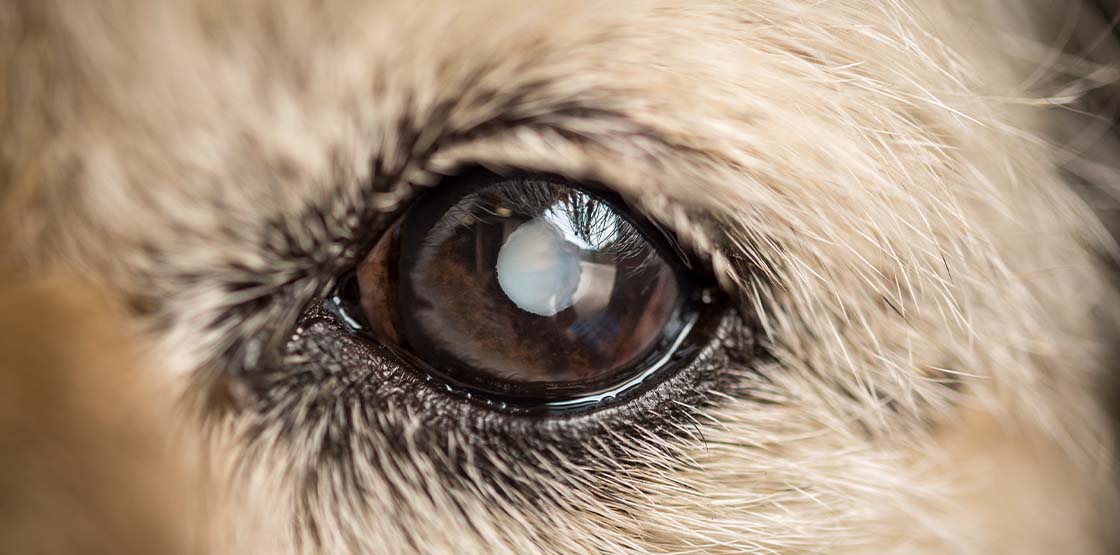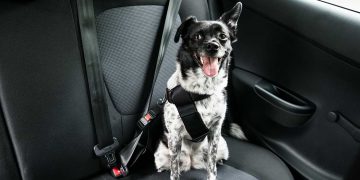How to Prevent Cataracts in Dogs
If you have had a pet for a long enough period of time, you might have noticed their eyes getting cloudy. This can be caused by several different things and one of the most common explanations that they have developed a cataract. Here’s how to prevent cataracts in dogs.
What Is a Cataract?
A cataract is a type of lens opacity that occurs within the eye. Because they are a type of opacity, they block the transmission of light through the lens of your dog's eye or eyes, which causes them to have blurry vision or even blindness. The good news is that with a small cataract, your dog can usually compensate quite well, with minimal disruption to their vision. If the cataract becomes larger, where it gets thicker and denser and may encompass more of the eye, they will often lead to blindness.
Cataracts have many different causes. The most common reason for developing a cataract is an inherited condition. Many pets that are affected with cataracts develop them as they age. Diseases of the eye or whole-body diseases can also cause cataracts, such as diabetes mellitus.
Certain breeds of dogs are prone to developing cataracts. Huskies are especially prone to developing cataracts when they are quite young, between 1 and 3 years old; these are known as juvenile cataracts. Other breeds that are commonly affected include Silky Terriers, Cocker Spaniels and Miniature Poodles.
Symptoms of Cataracts in Dogs
The most commonly described symptom of cataracts in dogs is a cloudiness or haziness to your dog's eye or eyes. With that said, there are other cause of haziness to the lens of the eye, such as nuclear sclerosis, a relatively benign age-related process.
You may also notice that your dog is having trouble navigating around the house. They may stare at the wall, seeing shadows, or bump into furniture that you have recently moved. It can be especially hard for them to navigate in low-light environments, such as in the evenings when you have turned off some of the lights.
In certain situations, cataracts can luxate or become inflamed. Your dog's eye can become very red and can even bulge. If you notice any issues such as these, it is important to have your dog evaluated by a veterinarian immediately.
You May Also Like:
Related Search Topics (Ads):
Diagnosis and Treatment for Cataracts in Dogs
Diagnosing cataracts in your dog starts with an exam. Your veterinarian can usually perform this ophthalmic exam themselves to determine if a cataract or nuclear sclerosis is the cause of your dog's cloudiness. Don't be surprised if they then refer you to a veterinary ophthalmologist. These ocular specialists can evaluate the extent of the cataracts and assess your dog's vision to see what treatment options would be ideal for your pet.
If your dog still has the ability to see, cataract removal surgery is often recommended. Under anesthesia, the ophthalmologist will surgically remove the affected lens. In its place, they will put a synthetic lens, generally made from acrylic or plastic material. As part of the healing process, your dog will need to stay quiet and calm, and they usually need to wear an Elizabethan collar. You'll need to be comfortable putting in eye drops, as several different types are often used post-operatively to control inflammation and prevent infections.
Is There Any Prevention for Cataracts in Dogs?
Unfortunately, there are not many ways to prevent cataracts in dogs. Having a thorough understanding of your dog's history may help predict if they are going to develop cataracts in the future, such as if they have had relatives who have had cataracts or if they are a breed that is predisposed to developing cataracts.
Try to minimize diseases or trauma that may be associated with cataracts. A primary cause of cataracts is diabetes. To help reduce the risk of your pet developing diabetes, make sure they maintain a healthy weight. Limit high carbohydrate treats and also try to minimize their risk for developing health conditions that can lead to the development of diabetes, such as pancreatitis. Try to also prevent traumatic injuries to the head that can increase the risk of cataracts.
You should examine your dog's eyes regularly, looking for any change in the color or appearance of their eyes. If you notice that your dog's eyes are looking hazy or bluish-gray in color, you should schedule an appointment with your veterinarian to have the pet's eyes evaluated. This is especially true if you are noticing any issues with your pet seeing or navigating the house, particularly if this arises quickly, which can mean other problematic vision loss problems could also be present.
In Summary
It is important to monitor your dog's eyes carefully for any changes, particularly since cataracts can start off relatively innocuous and then luxate and cause damage to the eye. If you have any questions about your pet's vision, don't hesitate to work with your veterinary team to get your pet a diagnosis, which may also involve a trip to a veterinary ophthalmologist.

